PPT-An introduction to Logic Programming
Author : basidell | Published Date : 2020-06-23
Chapter 7 So far The computational process was about operators and values And now for something completely different in some senses but similar in others 2 Chapter
Presentation Embed Code
Download Presentation
Download Presentation The PPT/PDF document "An introduction to Logic Programming" is the property of its rightful owner. Permission is granted to download and print the materials on this website for personal, non-commercial use only, and to display it on your personal computer provided you do not modify the materials and that you retain all copyright notices contained in the materials. By downloading content from our website, you accept the terms of this agreement.
An introduction to Logic Programming: Transcript
Chapter 7 So far The computational process was about operators and values And now for something completely different in some senses but similar in others 2 Chapter topics Introduction Relational Logic Programming. Please do not alter or modify contents All rights reserved 1FQMFXIFFMMZVDDFGVMJNQMFNFUJHUIJLJMM hy does my child always have an attitude Shes often disruptive disrespectful or picking on other children Shes always the one with a chip on her shoulder Please do not alter or modify contents All rights reserved For more information call 8003384065 or visit wwwloveandlogiccom Love and Logic Institute Inc is located at 2207 Jackson Street Golden CO 80401 57513 1998 Jim Fay 57375e Delayed or Anticipat Please do not alter or modify contents All rights reserved QVSIBTFE 1BJOMTT1BSOUJOHSUI1STDIMBST BDLTPU PMEF XXXMPWF E MPHDDPN 57513 2001 Jim Fay End the Bedtime Blues Parents Dont Need to Force Kids to Go to Sleep edtime is a time of frustration Permission granted for photocopy reproduction. Please do not alter or modify contents. All rights reserved. 800-338-4065 www.loveandlogic.com Closure properties in modal logic. Closure properties in modal logic. Specific modal logics. Specific . modal logics are . specified . by giving . formula schemes. , which are then called axioms, and . by. Murat . Sensoy. , . Geeth. de Mel, . Wamberto. . Vasconcelos. . and Timothy J. Norman. Computing Science, University of Aberdeen, UK. 1. Outline. Introduction. Motivation. OLP Architecture. A Case Study and Performance. Boolean Logic. Copyright © Texas Education Agency, 2013. How is Boolean Logic applied in the real world?. IT: [Computer Programming] - [Boolean Logic]. 2. Digital circuitry for electronics such as computers, phones and gaming devices all use Boolean logic in the form of tiny transistors that are arranged in groups to act like Boolean operators (AND, OR, NOT). These transistor groups are known as ‘gates.’ These gates provide decision-making, based on different input.. ?. Anatoliy. . Konversky. ,. academician of National Academy . of Science of Ukraine,. D. ean of Philosophy Faculty. Taras. Shevchenko National University of Kyiv. . Dear colleagues. , participants of the conference! . Seventh Edition. Chapter 1. An Overview of Computers and. Programming. Objectives. In this chapter, you will learn about:. Computer systems. Simple . program logic. The steps involved in the . program development cycle. We already know that the language of the machine is . binary. – that is, sequences of 1’s and 0’s. But why is this? . At the hardware level, computers are streams of signals. These signals only have two states of interest, high voltage and low voltage. . Learning Objectives. Know the three basic logic gate operators . Work out the output of given inputs using a truth table. All the instructions and data inside a computer are stored using binary. . Computer memory uses many small transistors and capacitors to store data. . The Desired Brand Effect Stand Out in a Saturated Market with a Timeless Brand The Desired Brand Effect Stand Out in a Saturated Market with a Timeless Brand
Download Document
Here is the link to download the presentation.
"An introduction to Logic Programming"The content belongs to its owner. You may download and print it for personal use, without modification, and keep all copyright notices. By downloading, you agree to these terms.
Related Documents

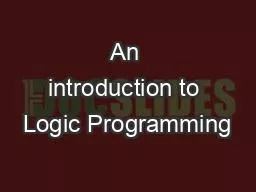

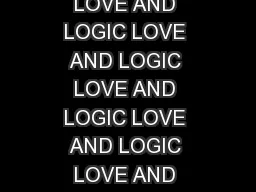
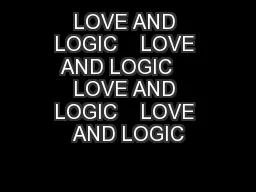
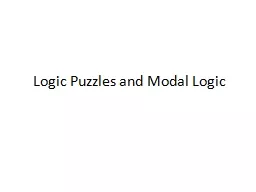
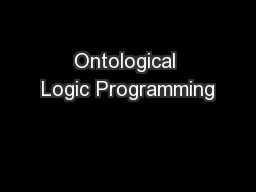
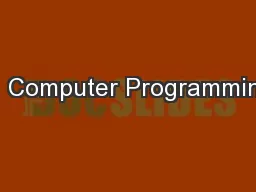
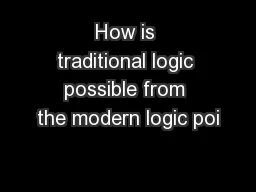
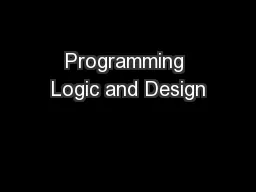
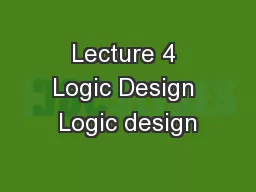

![[eBOOK]-Programming 60: C++ Programming Professional Made Easy & MYSQL Programming Professional](https://thumbs.docslides.com/980127/ebook-programming-60-c-programming-professional-made-easy-mysql-programming-professional-made-easy-c-programming-c-language-c-for-beginners-c-mysql-programming-mysql-c-programming.jpg)
![[BEST]-Programming 11:C Programming Success in a Day & Rails Programming Professional](https://thumbs.docslides.com/980146/best-programming-11-c-programming-success-in-a-day-rails-programming-professional-made-easy-c-programming-c-programming-c-programming-language-rails-android-programming-ruby-rails-php-css.jpg)